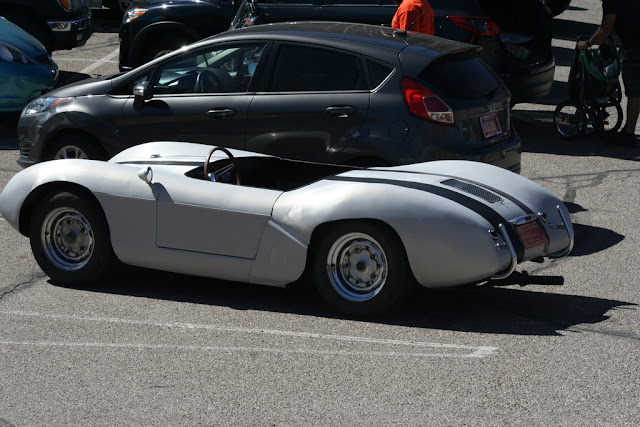We had a big day planned with Debbie and Dale and got up early to have breakfast at the Coyote Pause, a local restaurant. After that we pointed the car toward Sonoita, AZ and the Empire Ranch. The old original homestead with numerous additions over the years is in the process of being restored.
Empire Ranch Info
Vail Era (1876-1928
The Empire Ranch was originally established in the 1860’s as a homestead ranch of 160 acres with a flat topped four-room adobe ranch house and adjoining adobe-walled corral. In 1876 the ranch was owned by Edward Nye Fish, a Tucson businessman, when it was acquired for $2,000 by Walter L. Vail, a native of Liverpool, Nova Scotia, and Plainfield, New Jersey, and Herbert Hislop, an Englishman. John Harvey, an Englishman from Bermuda, joined the partnership a few months later.Over the next 20 years, as a part of the historic expansion of ranching, railroads, mining and other growth in the West, Vail and various partners expanded the original land holdings to include over 100,000 acres. The Total Wreck silver mine was discovered and developed, adding to ranch prosperity. The Ranch House became an extended complex with more than 22-rooms and a number of outbuildings and structures were added. Their original flat earthern roofs were later replaced with wooden gable roofs.
In 1896, in order to turn his attention more fully to growing corporate holdings in California. Walter Vail moved his family to Los Angeles and established his corporate headquarters there. Continuing Empire Ranch operations were overseen by Vail Company foremen until 1913 when William Banning Vail, Walter’s third oldest son, took over ranch management. He and his wife Laura Perry Vail, and their three children lived at the ranch until it was sold by Vail Company in 1928.
Boice Era (1928-1969)
In 1928, the Empire Ranch was purchased by the Chiricahua Ranches Company (CRC), successor to the Chiricahua Cattle Company (CCC). The CRC was incorporated by three Boice brothers, Henry Gudgell, Frank Seymour, and Charles Gudgell, respected ranchers known for their promotion of the Hereford breed of cattle in the Southwest. Frank Boice and his wife, Mary Grantham Boice, moved to the Empire Ranch in 1929. Frank and Mary’s sons, Pancho and Bob, grew up on the Empire Ranch and as adults assisted with ranching operations.The Boices added many modern conveniences to the Ranch House. Propane, and eventually natural gas, was piped into the house; a large electric walk-in refrigeration unit was installed; plumbing was upgraded and cement stucco was applied to the exterior house walls. The living room, dining room, and kitchen in the family residence were remodeled. A swimming pool was installed south of the house and became the focal point for family gatherings and parties.
During the 1940 and 1950s many Hollywood films were shot at the Empire Ranch and in the vicinity. The Boices hosted numerous film stars, including John Wayne, when Red River was filmed at the Empire Ranch.
Corporate Era (1969-1988)
BLM entered into a lease agreement with John Donaldson and his son Mac to continue ranching on the Empire Ranch, following modern ranching practices designed to preserve and monitor the LCNCA’s natural resources and also accommodate public recreation. In 2009 the Tomlinson family, owners of the Vera Earl Ranch in Sonoita, assumed the Donaldson grazing lease and are ranching on the Empire Ranch today.
From the outset, BLM managers were committed to preserving the historic Empire Ranch headquarters buildings and interpreting them for future generations. Necessary studies were undertaken to support and specify appropriate historic preservation.
The Empire Ranch Foundation (ERF) was established as a private non-profit organization in 1997 to work with the BLM to develop private support to preserve the ranch buildings and enhance the educational and recreational opportunities it offers to the general public. In the time since, ERF and BLM have completed significant emergency repairs to the main ranch house and to major outbuildings at the headquarters. Major long term permanent repairs to the Ranch House and Adobe Haybarn are being specified and undertaken as funding permits, while interpretation and education programs and a Discovery Trail are being implemented continuously.
Gerry and I have been to the ranch a number of times and always enjoy the visits. It is neat to see what a working ranch looks like and all the changes to it over the past 140 years. I know you must be tired of reading after the previous paragraphs so I will change over to pictures.
 |
| Ranch outbuildings |
 |
| Main ranch house with additions on both sides. Master bath or right. |
 |
| Nice windmill behind a barn |
 |
| Horse corral on the right |
 |
| Rooms for staff and ranch hands |
 |
| Living room |
 |
| Master Bath in addition |
 |
| General layout of the house |
 |
| Original roof beams |
 |
| Covered hitching post |
 |
| Old cattle corrals |
 |
| Huge cottonwood tree along the creek. |
The ranch was our first long stop, but not our last. Debbie and Dale have never been to Tombstone except for a drive through with us a couple years ago. They wanted to go back and check it out in more detail. More about that later.
Are you still reading this? If so, you must really be patient. Thanks for hanging in to the end.



















































